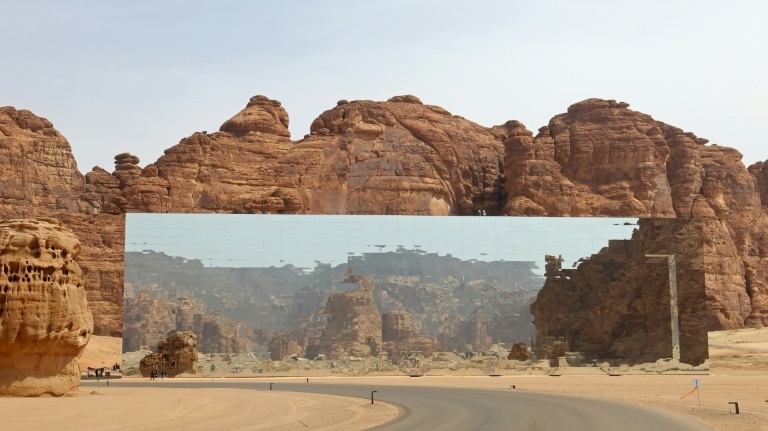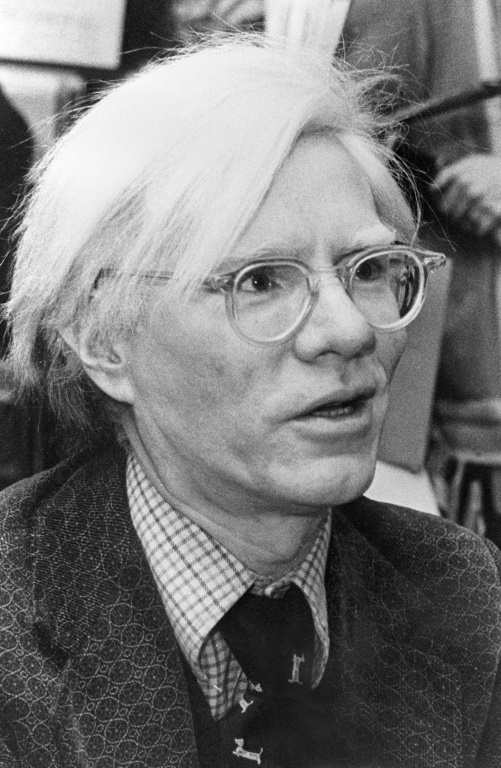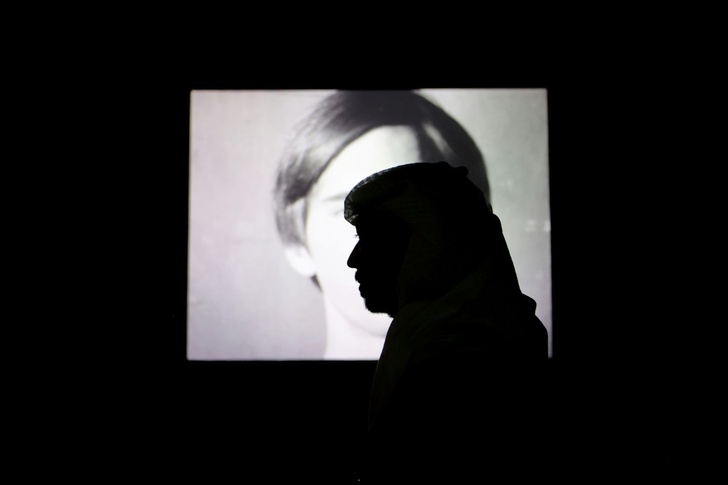Andy Warhol's iconic portraits of stars such as Marlon Brando and Dolly Parton are on display in the Saudi desert, at a show intended to reframe the kingdom's forbidding reputation.
The first exhibition in Saudi Arabia for the Pop Art giant is a tribute to the late artist's obsession with celebrity, and his seeming ability to predict the rise of contemporary influencer culture.
At the same time, organisers have tried to draw a connection between the world Warhol embodied –- New York City half a century ago -– and Saudi Arabia today.
"Warhol grew up through a time of radical change in America in the 1950s and 1960s, a time of a completely new vibrant youth culture, and he recorded that and reflected that," said Sumantro Ghose, arts programming director in AlUla, the Saudi town hosting the exhibition.
"Right now in Saudi Arabia, we're in a time of great change, great transformation," he added.
It would be hard to imagine a more unlikely ambassador for the new Saudi Arabia, where a burgeoning arts and music scene exists alongside harsh repression of political speech and the criminalisation of homosexuality.
For one thing, the Andy Warhol Museum in Pittsburgh, which collaborated on the exhibition, describes him as a "gay icon".
He also had little connection to the Middle East, save for quick trips in the 1970s to Iran and Kuwait, where he complained in his diary about the "strange coffee" and concluded that "there's no history to this place".
But Warhol, who died in 1987, would likely have relished the chance to show his work in Saudi Arabia and engage with its contradictions, said Warhol Museum director Patrick Moore.
"I think this country that is kind of evolving before our eyes would have been fascinating to him," Moore told AFP.
"He would have loved the fact that he was maybe a first in terms of a Western artist showing at this level in Saudi."
- Focus on fame -
Housed in AlUla's Maraya, a mirror-encased concert hall flanked by sandstone mountains, the tightly-edited exhibition lays out some of the more glamourous highlights from the Warhol catalogue in three main rooms.
Visitors first encounter short videos of celebrities filmed in his Manhattan "Factory" studio: a pensive Edie Sedgwick, a brooding Dennis Hopper and Lou Reed sipping a soft drink.
Then there are portraits of some of the biggest names of the era: from Jacqueline Kennedy Onassis and Judy Garland in the 1960s to Debbie Harry and Princess Caroline of Monaco in the 1980s.

The exhibition delves little into Warhol's personal life, but Moore said that's because it didn't fit neatly with the focus conveyed by the title: Fame.
"Literally no one has ever said to me, 'Don't talk about him as a gay man,'" Moore said.
"For me, as a gay man, I've been allowed to kind of very freely talk about my identity, in terms of working on the project and being involved in it."
- 'Influence over time' -
Other projects coinciding with the exhibition, which runs until May 16, point to Warhol's influence in the Arab world.
A separate, outdoor exhibition presents the "100 Best Arabic Posters", bright advertisements for shows and festivals around the region.
"You can see (Warhol's) influence over time, and the colours over time, and the pop culture that stems from that era, still being projected," said Omar AlBraik, arts programming and activities manager for ArtsAlUla.

With his blend of high fashion and mainstream pop culture imagery, Hajjaj is sometimes billed as the "Andy Warhol of Marrakesh", though he downplays the comparison and Warhol's influence.
He said, though, that he was grateful for the chance to learn more about Warhol and spend time in AlUla, which Saudi Arabia is trying to position as a new global arts hub.
Critics contend such efforts smack of "arts-washing", the use of cultural programming to distract from human rights abuses.
But Donald Warhola, Warhol's nephew, said he believed these broadsides missed the mark.
"I've read the press... One could interpret it as, 'Hey, Andy Warhol is being used,' but I don't believe that personally," Warhola said.
"No one knows where this will end up, but I'm very hopeful and I commend the Saudi government and the Saudi cultural world for allowing Uncle Andy's art to be in their cultural space."
rcb/ho/pjm/fz/it
© Agence France-Presse
Your content is great. However, if any of the content contained herein violates any rights of yours, including those of copyright, please contact us immediately by e-mail at media[@]kissrpr.com.
Source: Story.KISSPR.com

